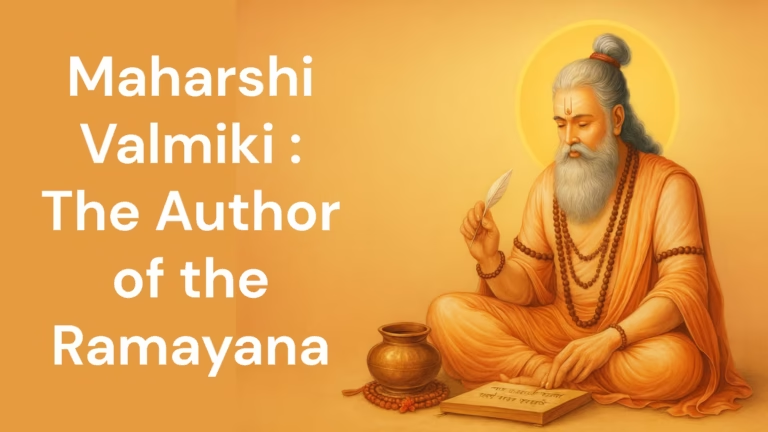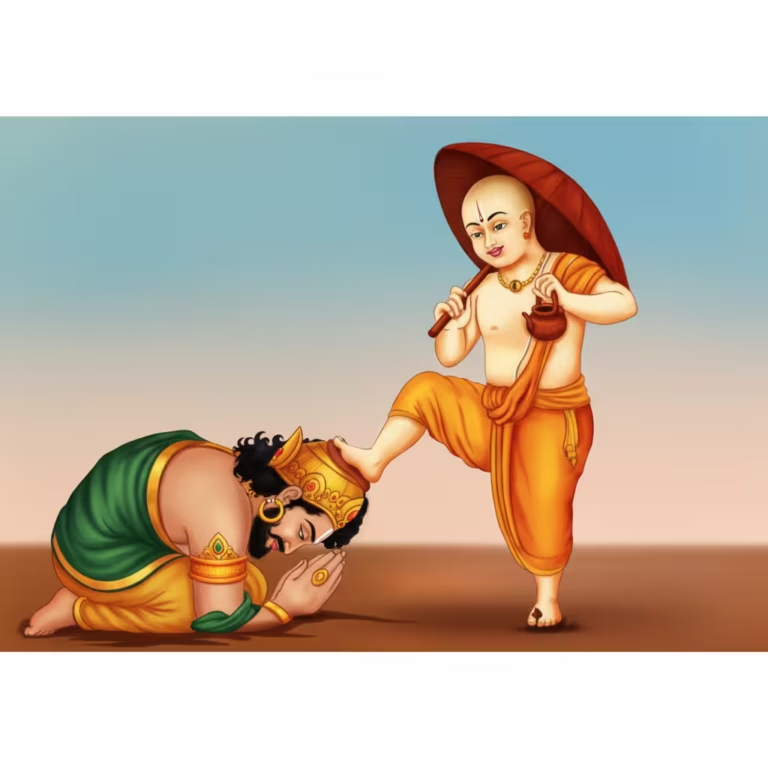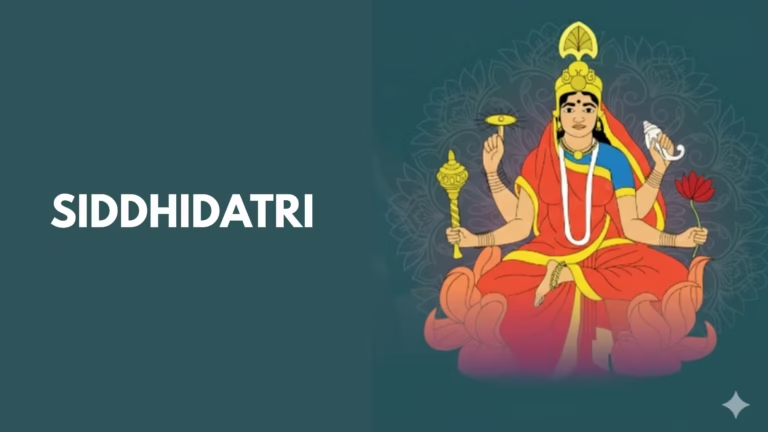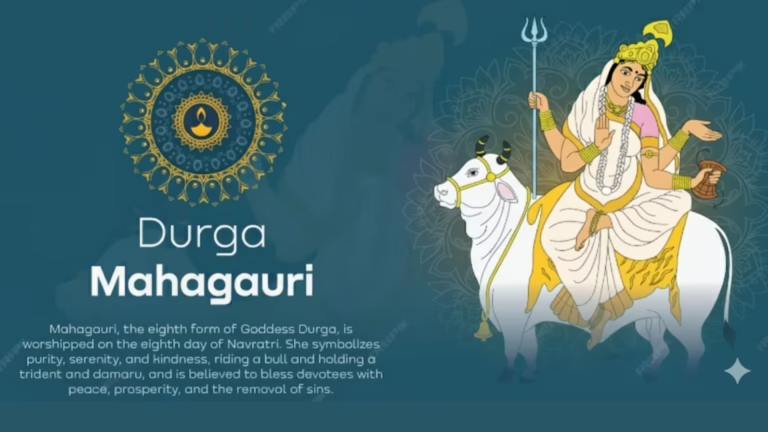Maa Katyayani embodies that radiant dimension of Shakti which simultaneously manifests protection of dharma, destruction of the demonic, and safeguarding of seekers. Within the Shakta tradition the Adi‑Shakti unfolds in many forms; among these, Katyayani is remembered for fierce radiance (ugra‑tejas), courage, and welfare of the world. In the Devi‑Mahatmya (within the Markandeya‑Purana tradition) and the Devi‑Bhagavata‑Purana, the dominant strands are the Goddess’s manifestation, the slaying of demons, and the re‑establishment of righteousness. In this wider scriptural landscape, the Katyayani‑tattva blends both the fierce aspect of Mahishasura‑mardana and the compassionate aspect of devotee‑protection.
In the Krishna‑bhakti tradition, Bhagavata Purana (Skandha 10, Chapter 22) narrates the celebrated Katyayani‑vrata of the Vraja maidens, who worship Maa Katyayani and pray to accept Bhagavan Krishna as their husband. This shows that Katyayani is not only fierce; she is also the boon‑giving Mother of compassion. This life‑charit arranges, from a strictly scripture‑based perspective, the name‑etymology, origin, iconography, principal Puranic narratives, worship‑ordinance, fruits of sadhana, and dharma‑ethic.
Name–Etymology and Tradition
Regarding the name “Katyayani,” a well‑known Puranic explanation says: the Goddess manifested through the austerities (tapas) of the sage Katyayana (from the lineage Katya), or appeared in the lineage of Katya, hence the name “Katyayani.” This interpretation links the form of Shakti with rishi‑austerity and divine mission—indicating that the Goddess’s manifestation is not an arbitrary miracle but the synergy of divine grace and ascetic merit for the protection of dharma.
Thus, the purport of the name‑etymology is that Katyayani arises from the convergence of acharya‑tapas and the collective aspiration for loka‑mangala (the welfare of beings). Hence she is understood as a harmony of fierceness and peace—fierce in subduing adharma, gentle/compassionate in protecting devotees.
Also read: Maa Kalaratri: Life‑Charit (Puranic)
Origin‑View: Adi‑Shakti and the Katyayani‑Tattva
The Puranas describe Adi‑Shakti as the Mahā‑Māyā of the Supreme, the power behind the devas, and the governess of cosmic order. In the Devi‑Mahatmya, moved by the devas’ hymns, the Goddess manifests to annihilate the demonic hosts; this annihilation is not mere destruction but the re‑establishment of dharma. In this very tradition, Katyayani is remembered for subduing Mahishasura and dispelling fear—her radiance fierce toward the wicked, yet compassionate toward the devotee.
The Devi‑Bhagavata Purana elaborates the Goddess’s many forms, modes of worship, and divine missions. The Katyayani‑tattva is the vivid, heroic emanation of these currents—awakening valor and steadfastness while retaining forbearance and compassion.
Iconography: Weapons, Vehicle, and Emblems
Puranic poetry and hymns recall Katyayani as multi‑armed, weapon‑bearing, and lion‑mounted (seated upon or riding the lion). Across texts and hymns, the weapons include trishula (trident), khadga (sword), chakra (discus), bow‑and‑arrows, gada (mace), kamandalu (water‑pot), along with varada/abhaya mudra (boon‑bestowing and fear‑dispelling gestures). This variety signals functional dimensions of action; fixed counts and identical lists are not the concern of the Puranas.
Each emblem in her iconography simultaneously indicates nurture and subjugation: the varada/abhaya mudra denotes fear‑removal and assurance; the weapons—the suppression of adharma; the kamandalu/ghata—nurture and inward peace. The lion‑vehicle is an enduring symbol of fearlessness and the protection of righteousness.
The Slaying of Mahishasura: An Ideal of Fierce Valor
In the Devi‑Mahatmya, the Goddess—born of the radiances of the devas—annihilates Mahishasura and many other demons. The tradition reveres this fierce form as “Mahishasura‑Mardini.” In many Shakta lineages this very fierce form is also remembered as Katyayani. Substantively, it is one and the same Adi‑Shakti expressing different functions; a change in name does not alter the doctrinal import—which remains the subjugation of adharma, the restoration of dharma, and the protection of devotees.
This episode is not merely an outer battle; it also allegorizes victory over inner demonic tendencies—ego, intoxication, envy, and violence. The Katyayani‑tattva teaches that valor is complete only within the bounds of justice and self‑restraint; otherwise it reduces to mere ferocity.
The Katyayani‑Vrata (Bhagavata Purana 10.22) and the Boon‑Granting Tradition
Bhagavata Purana (Skandha 10, Chapter 22) narrates the Katyayani‑vrata of the Vraja maidens during winter. They bathe daily in the Yamuna, fashion a Devi‑murti of river‑sand/clay, offer flowers, incense, and naivedya, and chant the following mantra:
kātyāyani mahāmāye mahāyoginy adhīśwari |
nandagopa‑sutaṁ devi patim me kuru te namaḥ ||
(Devanāgarī)
कात्यायनि महामाये महायोगिन्यधीश्वरी।
नन्दगोपसुतं देवि पतिṁ मे कुरु ते नमः॥
The scriptural purport is that Katyayani—Mahāmāyā, the great Yogini, the sovereign—fulfills a seeker’s sāttvika aspiration within the bounds of dharma. Here the explicit aim was to accept Krishna as husband; more broadly, the passage indicates that in householder decisions—such as choosing a life‑partner—remembrance of the Goddess instills moderation, purity, and propriety.
Do note: the finer steps of the vrata, fasting rules, etc., vary across traditions/teachers; the Puranic emphasis remains upon purity, truth, and non‑injury.
Scriptural Worship: Core Ordinance and Discipline
The foundations of Shakta worship are mantra, meditation, hymnody, and purity of conduct. In Katyayani‑upasana, the classical priorities are:
- Purity and Resolve: truthfulness, sāttvika diet, disciplined conduct, and a firm resolve for Devi‑worship.
- Recitational Tradition: reading of the Devi‑Mahatmya (Durga‑Saptashati lineage), chanting of stotras, and mantra‑japa as instructed by one’s Guru.
- Invocation, Offerings, and Arati: all within one’s means and within scriptural bounds—free of ostentation, with inner purity foremost.
Puranas consistently hold that the essence of worship is purification of conduct—outer rites bear fruit only when inner sadhana is firm.
Fruits of Sadhana: Scriptural Assurances
The Katyayani‑tattva implants within the seeker fearlessness, patience, restraint, and a sense of justice. Scriptural traditions indicate the following fruits:
- Removal of Fear; Grant of Assurance: dissipation of doubt and fear; awakening of self‑confidence.
- Valor and Steadfastness: courage, stability, and dutifulness in demanding fields of action.
- Removal of Obstacles: pacification of inner/outer hurdles—laziness, heedlessness, delusion.
- Disposition for Public Good: a movement beyond personal attainments toward service of the community and the establishment of just conduct.
These fruits endure only when the practice is regular, Guru‑guided, and conformant to śāstra.
Dharma‑Ethic and the Householder’s Path
The Katyayani‑tattva instructs the householder that the protection of family and society is sustained not by affection alone but by wise discipline. Three guiding threads of dharma‑ethic are:
- Truth and Non‑injury: purity in speech and action; justice above likes and dislikes.
- Discharge of Duties: commitment to responsibilities at home, work, and in society.
- Restraint and Service: regulation of the senses, prudent time‑management, and contribution to public welfare.
The essence of Katyayani‑worship is that compassion and valor must coexist—compassion for protection; valor for resistance to adharma.
The Navadurga Tradition and the Place of Maa Katyayani
Among the nine worshipful dimensions of Shakti—the Navadurga—Katyayani is remembered with the central sentiments of fierce radiance, courage, and protection of the people. Although the orderly day‑by‑day sequence of the Navadurga is arranged within acharya lineages, the doctrinal core is that all forms are functional expressions of the one Supreme Shakti; thus the goal of Katyayani‑upasana is likewise the establishment of dharma and the welfare of the seeker.
Frequently Asked Questions (FAQ)
Is Maa Katyayani explicitly mentioned in the Puranas?
Yes. Katyayani as a form of Shakti is remembered in texts such as the Devi‑Bhagavata Purana; and Bhagavata Purana (10.22) contains the detailed account of the Katyayani‑vrata. The Devi‑Mahatmya enshrines the fierce form that slays Mahishasura—many Shakta traditions identify and harmonize this with the Katyayani‑tattva.
Are Maa Katyayani and Durga different?
From the scriptural viewpoint, they are functional manifestations of the one Adi‑Shakti. A difference in name does not change the doctrinal purport. The fierce form that slays Mahishasura is Mahishasura‑Mardini; many traditions remember this also as Katyayani.
What is the essence of the Katyayani‑vrata?
According to Bhagavata Purana (10.22), it is worship of the Goddess with purity, restraint, and sāttvika intent—guiding even householder decisions with propriety and discernment.
Are the vehicle/weapon/number of arms fixed?
Hymns and Puranic poetry vary; the intent is to signify both nurture and subjugation, not to fix numerical counts.
Instructional Message: Valor with Compassion
The teaching of the Katyayani‑tattva is that compassion is protection, not indulgence; and valor is resistance to adharma, not display of anger. The aim of sadhana is inner restraint and outer justice—only then does the order of dharma remain steady.
Maa Katyayani is that current of Shakti which continuously streams fearlessness, discernment, restraint, and public‑spirited service into a seeker’s life. In the lineages of the Devi‑Mahatmya and the Devi‑Bhagavata Purana, her fierce radiance serves the annihilation of adharma; in the Katyayani‑vrata of the Bhagavata Purana, her maternal form fulfills the sāttvika wishes of devotees—both unified by a single thread: the establishment of dharma. The essence of worship lies in a pure heart, scriptural recitation, and obedience to the Guru—a path that grants long‑lasting peace and meaningfulness.



